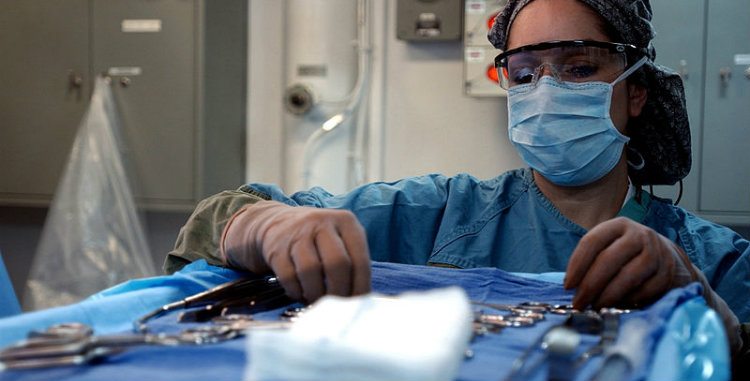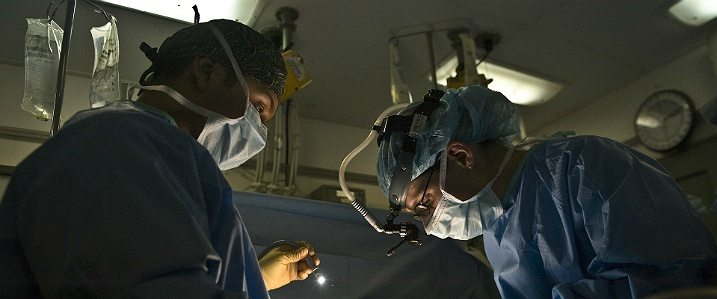Obstetricians who choose to intervene in a difficult delivery must use extraordinary care to prevent babies from suffering severe traumatic injuries.
- Traumatic brain damage
- Brachial plexus injuries
- Cranial nerve palsy
Was your baby harmed during childbirth? Contact our experienced birth injury attorneys today to learn more about your legal options in a free consultation.
No child should suffer unnecessary trauma during birth.
"Honest & Ethical." Laurence and his team are the best.
Minor, albeit traumatic, injuries are fairly normal during childbirth. Most obstetricians agree that minor bruises and swelling are to be expected. Labor and delivery are difficult physical processes, after all, and infants are put under significant pressure as they pass through the birth canal. Thankfully, these physical injuries are usually limited and heal within a few days. But for other newborns, especially those who sustain head injuries during childbirth, the consequences of a traumatic birth can be far more serious.
What Is Birth Trauma?
Many infants suffer birth injuries, but only some of these children have been harmed by birth trauma. Birth trauma refers in the vast majority of cases to damage sustained by a newborn as the result of mechanical forces. That can mean an inappropriately excessive use of forceps during assisted deliveries, or simply the pressures of being pushed through their mother’s birth canal.

Why Do Babies Suffer Traumatic Injuries During Delivery?
Traumatic birth injuries are most common in difficult and long labors. Uterine contractions can force a child’s head to strike at the mother’s pelvis repeatedly. With the infant’s skull still developing, brain damage is a frequent result.

In cases of cephalopelvic disproportion, a child’s head is too large to fit through the mother’s pelvis easily. Many doctors turn to assistive technologies, like forceps and vacuum extractors, or simply use their hands to help a child through the birth canal. But babies are extremely delicate, and excessive, or inappropriately, applied force can lead to severe injuries, including brain trauma.
Other potential causes of traumatic birth injuries include:
- Induced Labor – when doctors prescribe drugs, like oxytocin (Pitocin), to induce contractions
- Labor Dystocia – when an infant is unable to pass through the pelvis because of a physical obstruction
- Fetal Macrosomia – when a baby is much larger than average (usually defined as infants with a birth weight higher than 8 pounds and 13 ounces)
Larger babies are far more likely to suffer birth trauma than infants of an average size.
Abnormal Fetal Position & Presentation
Most children sustain traumatic birth injuries to the face or head. That’s because most infants are born head-first. But infants who don’t enter the birth canal head-first are also at risk of suffering mechanical trauma.
Breech Delivery Complications
Breech deliveries are particularly risky. Breech babies are born feet or buttocks first, not head first. In this abnormal position, infants can sustain extensive injuries to their muscles and soft tissues, especially those in the back and legs. Spinal injuries are also possible, as is significant head trauma, including brain bleeds and deep lacerations. Breech deliveries also increase the likelihood of umbilical cord complications, including cord prolapse, a true medical emergency.
The Link Between Breech Birth & Brain Damage
Breech presentation may create a particular risk for brain damage, according to Icelandic professor of obstetrics Reynir Geirsson. As Geirsson notes in his paper “Birth Trauma and Brain Damage,” newborns who are delivered in a breech position are more likely to develop syndromes related to brain damage during their lives.
While the causes of brain damage are various, Geirsson and other researchers believe that physical trauma often plays a role. Breech babies, along with children who are large for their gestational age, may be more likely to suffer traumatic brain injuries during the delivery process.
In their reports on infant brain trauma, researchers continually stress the importance of competent medical care. Diagnosing maternal and fetal health conditions proactively is essential to mitigating the risks for traumatic brain injuries. As Reynir Geirsson writes, “competent handling is required if […] brain damage caused by traumatic birth is to be minimized.”
Asynclitic Presentation
Many other abnormal birth positions can lead to traumatic injuries, including asynclitic births, in which a child’s head presents first, but is tilted toward a shoulder, drawing the fetus out of alignment with the birth canal.
Shoulder Dystocia
Shoulder dystocia is another common cause of traumatic birth injuries, including brachial plexus injuries. In cases of shoulder dystocia, a child’s head is able to exit through the birth canal, but his or her shoulders become stuck behind the mother’s pelvis. Doctors frequently attempt to pull the child’s body, but extreme care must be used to avoid the infliction of significant nerve damage.
Managing An Abnormal Birth
In any of these situations, doctors have a duty to diagnose potentially dangerous complications whenever possible, and react appropriately to prevent severe injuries. But in some cases, the solution for these abnormal presentations can itself become a cause of harm.
Obstetric turns, in which doctors attempt to manually correct an infant’s positioning inside the womb, often lead to unacceptable risks for a newborn’s health. Many obstetricians now opt to deliver babies who present abnormally through Caesarean section, and manual repositioning is fast falling out of favor in expert circles.
Ordering an emergency c-section is often the best choice for delivering an infant who has presented abnormally. Despite widespread agreement on this point in the medical literature, some obstetricians continue to attempt vaginal deliveries, using manual force in many cases.
Common Traumatic Birth Injuries In Newborns
Simple physical forces, including the pressures exerted by contractions, can lead to minor bruising and abrasions in infants. Birth-assistive devices, like vacuum extractors, can also leave children with lacerations and worrying redness on their scalps.
Caput Succedaneum
In caput succedaneum, a newborn’s scalp appears swollen. It can look like a bump on the head, and usually subsides over the course of several days. While caput succedaneum is not a sign that an infant’s brain or bones have been damaged, the condition can increase the risk of more complex medical problems, including jaundice.
Caput succedaneum is normally caused by unavoidable physical pressures of labor, like the force exerted by a dilated cervix, but may also result from the use of birth-assistive devices.
Cephalohematoma
Cephalohematoma should not be confused for caput succedaneum, although both conditions are usually caused by the same factors. Cephalohematoma refers to the buildup of blood between an infant’s skull and periosteum, a protective barrier of membranes coating the skull.
The condition looks like a collection of lumps across a child’s head, which usually appear a few hours after childbirth. Most cases resolve without any need for medical treatment after several weeks (months in rare cases), but severe cephalohematoma can make an infant more likely to develop serious conditions like jaundice, anemia and low blood pressure.
Cephalohematoma is often caused by prolonged labors, as well as vacuum extraction. In limited cases, the condition is actually the result of a skull fracture, putting children at risk of developing brain infections.
Subconjunctival Hemorrhage
Subconjunctival hemorrhage happens when a small blood vessel bursts directly underneath the surface of the eye. In most cases, the condition’s appearance is more troubling than its effects. The eye’s surface has trouble absorbing blood, so an infant’s eye can remain red for several days or weeks – usually as a bright red circle around the iris. Fortunately, there’s no risk of long-term eye damage or vision impairment.
Infant Brain Injuries
For obvious reasons, brain injuries are a major, and sometimes devastating, risk of traumatic head damage during childbirth. The brain is extremely complex, and the consequences of brain trauma will vary depending on the extent, location and severity of a child’s injuries.
Intracranial Hemorrhage: Bleeding In The Brain
Infants who experience traumatic deliveries are more likely to develop intracranial hemorrhage, or bleeding inside the brain or skull. With appropriate medical attention, many children will survive this condition with few long-term complications.
Subgaleal Hematoma Or Hemorrhage
Subgaleal hemorrhage, or hematoma, is bleeding that fills a space between the periosteum, a membrane surrounding the skull, and a layer of dense fibers that coat the cranium. 90% of subgaleal hemorrhage cases in newborns are caused by vacuum extraction procedures, researchers say in the Journal of Paediatrics and Child Health.
While subgaleal hematoma itself has a relatively good prognosis, the condition is associated with additional trauma, including skull fractures, in up to 4 out of every 10 babies.
Subdural Hematoma
In cases of subdural hematoma, blood vessels rupture inside the subdural space, a gap between the brain’s surface and a thin layer of tissues that serves to separate the brain from the skull. While blood collects outside of the brain proper, it can still exert significant pressure on the brain tissue lying underneath. In severe cases, this increase in pressure can injure brain tissue, even leading to neurological disorders like cerebral palsy.
Subarachnoid Hemorrhage
Subarachnoid hemorrhage, a form of bleeding that occurs between the arachnoid membrane and pia mater, is a type of stroke. Subarachnoid hemorrhage is always a medical emergency, and immediate intervention is required to prevent severe impairment or death.
Intraventricular Hemorrhage
Widely considered the most serious form of intracranial bleeding, intraventricular hemorrhage occurs inside the brain’s ventricles, channels that produce cerebrospinal fluid. Severe cases of intraventricular hemorrhage can lead to the swelling of brain tissue, permanent brain damage and a wide variety of neurological impairments.
The injury is most common among premature infants, the US National Library of Medicine reports, especially children born more than 10 weeks early.
Bone Fractures
Broken bones are most likely to occur in larger babies who present abnormally, either in breech position or shoulder dystocia. While arms and legs can fracture during delivery, broken collarbones are most common.
For largely mysterious reasons, some infants will sustain a broken collarbone, or clavicle, during a well-managed birth. That being said, the use of forceps during an assisted delivery almost certainly increases the risk of a broken clavicle. In manually-assisted deliveries, especially those attempted to remedy shoulder dystocia, a child’s sensitive collarbone can be broken due to excessive pulling.
Nerve Damage
Nerves transmit electrical impulses from the brain and spinal cord to muscles and organs, making movement and sensation possible. Traumatic deliveries can severely injure a child’s nervous system, leading to life-long impairments.
Facial Nerve Palsy (Bell’s Palsy)
Bell’s palsy, a condition caused by damage to an infant’s facial nerve, causes either paralysis or weakness, usually on one side of the child’s face. Most cases of the condition improve of their own accord, at least when the nerve itself has only suffered bruising. But if a child’s nerve is torn, Bell’s palsy can be permanent. Surgery is often required.
Brachial Plexus Injuries
The brachial plexus is a collection of nerves that transmit information between the spinal cord and the arms and hands. Injuries to the brachial plexus are often sustained during difficult deliveries, especially in cases of shoulder dystocia, when doctors can pull too forcefully on an infant’s arm. The risk is also increased for children who present in the breech position, with their feet pointing down the birth canal.
While some brachial plexus injuries heal over a course of weeks, significant nerve damage can result in permanent disability.
Traumatic Birth Lawsuits
When infants suffer severe trauma during labor or delivery, their injuries are often the result of medical negligence. Incompetent obstetricians, nurses and midwives can, and do, allow lifelong damage to befall newborns during the childbirth process. In fact, “nearly one half [of traumatic birth injuries] are potentially avoidable with recognition and anticipation of obstetric risk factors,” according to the medical experts at Medscape.
Medical errors are inexcusable, especially when a child’s health is at stake. But many families have options. If a child’s injuries were caused by medical malpractice, the family may be eligible to pursue significant financial compensation in a court of law.



